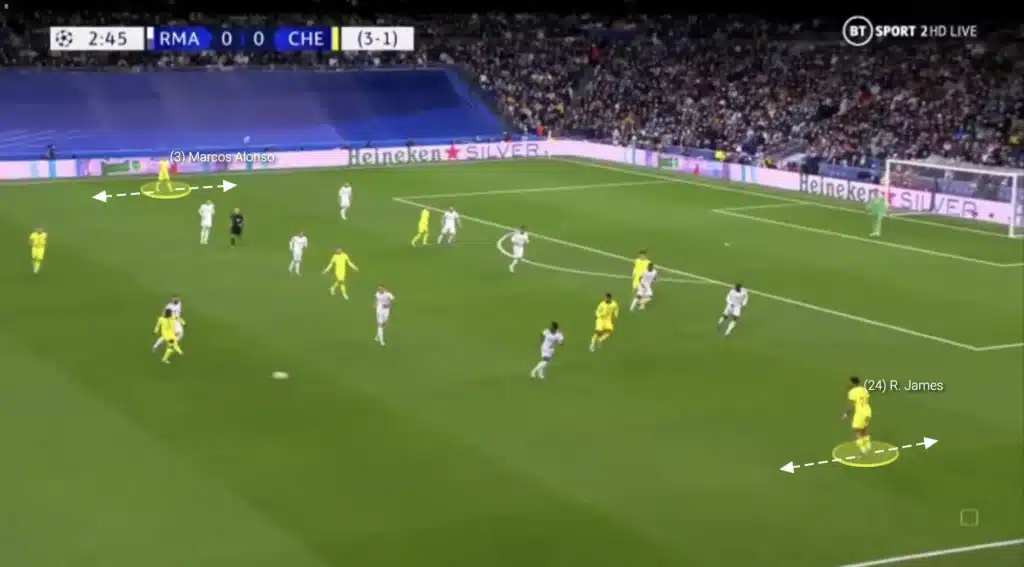In the age of hyper-specialization and tactical fluidity, few roles have evolved as dynamically as the wing-back. Once a niche adaptation used primarily in three-at-the-back systems, the wing-back has become a critical figure in modern football, blurring lines between winger, fullback, and midfielder. As teams shift between formations in and out of possession, the wing-back has emerged as a positional chameleon — a role demanding both athletic and tactical excellence.
This article builds a comprehensive profiler for the modern wing-back, using data, tactical theory, and practical examples to help coaches, scouts, and analysts assess fit, function, and future potential.
Understanding the Wing-Back Role: Tactical Definition
A wing-back is typically deployed in systems with three central defenders (e.g., 3-4-3, 3-5-2, or variations like 3-2-5 in possession). They are positioned higher than traditional fullbacks and carry more responsibility for both vertical width in attack and recovery defending in transition.

Key distinctions from traditional fullbacks:
| Aspect | Fullback | Wing-Back |
|---|---|---|
| Starting Height | Deeper, closer to center-backs | Higher, near midfield or winger line |
| Width | Shared with winger | Primary width provider |
| Defensive Role | Often 1v1 on winger | Tracks wide forwards + underlaps |
| Attacking Role | Overlaps and supports winger | Often sole wide attacker |
Modern trend: Top teams like Inter (Dumfries/Dimarco), Leverkusen (Frimpong/Grimaldo), and Atalanta (Zappacosta/Ruggeri) use wing-backs as dynamic outlets in both transitional and positional attacks.
Core Attributes: Building the Wing-Back Profiler
To build an evidence-based profile of a modern wing-back, we can segment key traits into three primary categories:
1. Physical Profile
Wing-backs must consistently cover the entire flank. Unlike traditional fullbacks who may sit deeper, wing-backs operate in high-intensity zones — sprinting into the final third, recovering defensively, and engaging in duels.
Key physical traits:
- Aerobic capacity (sustained high-speed running)
- Acceleration and recovery speed
- Repeat sprint ability
- Body coordination (to manage tight spaces at speed)
Data Source Tip: Metrics like distance covered per 90, high-speed runs, and sprints per 90 (e.g., via Wyscout or Second Spectrum) help quantify this.
2. Technical Skillset
Modern wing-backs act as hybrid creators and retainers. Depending on tactical demands, some lean toward crossing and final-third play, while others serve as possession recyclers or inverted playmakers.
Key technical abilities:
- Crossing accuracy under pressure
- Ball reception in wide isolation
- Combination play (e.g., wall passes with midfielders)
- Weak foot usage (especially for switch play or cut-backs)
Applied Example: Jeremie Frimpong is more of a dribble-and-cutback profile, while Federico Dimarco excels in early crosses and set-piece delivery. These nuances define their tactical fit.
3. Tactical and Mental Intelligence
Wing-backs must read the game both vertically and laterally. They’re responsible for balancing wide overloads, pressing triggers, and quick decision-making during transitions.
Tactical demands include:
- Timing underlaps or overlaps
- Knowing when to join the front line vs. protect the backline
- Zone 14 awareness when entering central areas
- Defensive orientation in transitional moments
Film Room Tip: Use positional heatmaps + freeze-frame video to identify when a wing-back chooses to advance or hold shape. This reveals both team structure and player intuition.
Tactical Fit: Role Typologies by Team Style
Not all wing-backs are created equal. Their success depends heavily on the system and style of the team. Below are four tactical archetypes to consider:
1. The High and Wide Sprinter
- Used by: Inter (Dumfries)
- Role: Stays glued to the touchline, creates width, attacks space
- Ideal Fit: Teams that emphasize fast transitions and wide overloads
- Key Attribute: Speed + 1v1 crossing execution
2. The Inverted Link Player
- Used by: Bayer Leverkusen (Grimaldo)
- Role: Drifts inside to assist in build-up or create a box midfield
- Ideal Fit: Positional play teams with wide rotations
- Key Attribute: Tactical intelligence + composure under pressure
3. The Creative Final Third Threat
- Used by: Juventus (Kostić)
- Role: Delivers final ball, overlaps into dangerous zones
- Ideal Fit: Teams that funnel wide play into attacking output
- Key Attribute: Final third passing + cut-back decisions
4. The Defensive Enforcer
- Used by: Brentford (Rico Henry)
- Role: Tracks wingers aggressively, blocks crosses, protects far post
- Ideal Fit: Compact, low/mid-block teams
- Key Attribute: Recovery speed + 1v1 defending
Scouting and Data Filters: Practical Application
When scouting wing-backs, especially for specific tactical systems, a mixed-methods approach works best. Here’s a suggested layered filter:
Step 1: Initial Data Screening
Use platforms like Wyscout, StatsBomb, or SciSports to identify candidates with:
- High progressive runs per 90
- High expected threat (xT) from wide areas
- Above-average defensive duel success
- Consistent crossing volume and accuracy
Step 2: Role Classification
Based on video, categorize player into one of the four role archetypes:
- Does the player prefer underlaps or hugs the touchline?
- Does he cut inside or look to cross early?
- What’s his behavior in negative transitions?
Step 3: Team-Fit Assessment
Overlay findings with the team’s game model. For instance:
- A wing-back in a team like Union Berlin (direct, wide, physical) should differ from one in Real Betis (technical, positional, inverted).
Conclusion: Redefining a Role
The modern wing-back is no longer a marginal role player — they are pivotal to width, transitions, and tactical flexibility. Whether as wide sprinters, inverted orchestrators, or third attackers, wing-backs are often the system’s most adaptable asset.
For coaches, analysts, and scouts, building a role-specific profiler is no longer optional. Understanding how data, tactical context, and player traits intersect is essential for identifying and maximizing the right wing-back for your system.
Final Thought:
When analyzing a wing-back, don’t just ask how good are they? Ask:
“How do they behave — and how do they fit?”
